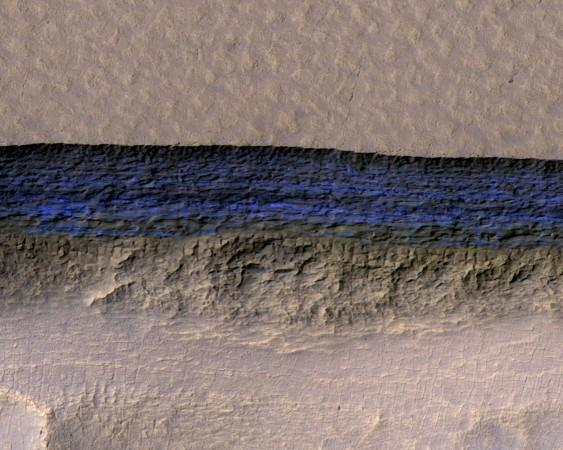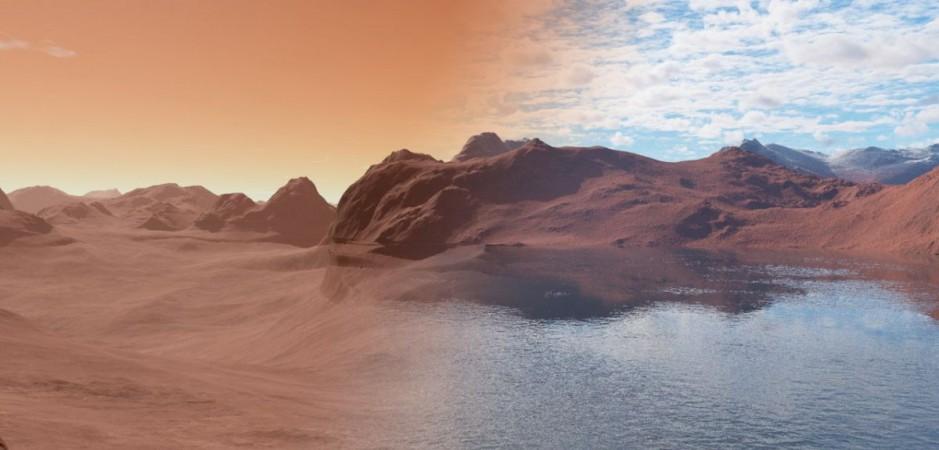
Researchers previously believed that Martian surface might have absorbed water on the Red Planet. However, in a game-changing development, scientists have discovered huge ice sheets on Mars and they believe that it could provide an unlimited supply of water for the humans.
The frozen water near the Martian surface was detected using images from NASA spacecraft Mars Reconnaissance Orbiter currently orbiting Mars. With the help of the images, scientists found out that there are eight sites that appear to have huge ice deposits on steep slopes.
Scientists have always believed that a third of Martian surface contains shallow ground ice, but the latest discovery of huge ice sheets in at least eight sites serves is sort of a "game-changer." Researchers have found that there are pure ice sheets that extend up to 100 meters deep.
Colin Dundas, a geologist at the US Geological Survey in Flagstaff, Arizona, and his co-authors studied the image and discovered the steep cliffs that appeared to be pure ice. They also believe that the different cliffs could hold a record of past Martian climates.
"Mars is cold and dry, with most of the H2O in the form of ice, and a little water vapour in the atmosphere," Colin Dundas, lead author of the study from the US Geological Survey's Astrogeology Science Center, told IBTimes UK.

"The ice is concentrated in layered deposits at the poles, and also found in the shallow sub-surface at middle latitudes, as in our study. (We've previously known about shallow subsurface ice from multiple lines of evidence). The possibility of liquid water has been much discussed, but a recent paper that we published in November suggests that some of the leading candidates for liquid flow are actually granular flows," he said.
The authors of the study have said that the latest discovery will be helpful for the establishment of a base on the Red Planet, as the water could be used for drinking, potentially create oxygen and fuel.
"Here we have what we think is almost pure water ice buried just below the surface. You don't see a high-tech solution," planetary scientist Shane Byrne of the University of Arizona Lunar and Planetary Laboratory, a co-author of the study in the journal Science, said.
"You can go out with a bucket and shovel and just collect as much water as you need. I think it's sort of a game-changer. It's also much closer to places humans would probably land as opposed to the polar caps, which are very inhospitable."
The ice sheets deposits were found at the geological formations with latitudes of around 55 degrees to 58 degrees located in the southern and northern hemisphere.
"Astronauts could essentially just go there with a bucket and a shovel and get all the water they need," Byrne said.















